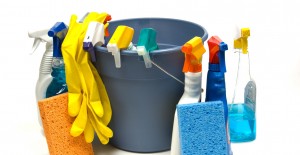Five tips for spring maintenance in your hydraulic systems

Spring has arrived, with all the fanfare of a 3675th place finish in the Boston Marathon. As I write this, I am elated by the sunny and relatively balmy weather outside, but also saddened because I know the daytime high barely pushed the mercury into the normal range for this time of year; relativity is a funny thing. Nevertheless, what better time to consider your seasonal maintenance regimen than the spring? I’ve got five tips for spring maintenance that wont be any more painful than raking the garbage left on your lawn by melting snow drifts:
1 Oil Analysis: Although I recommend you monitor fluid condition more often than once a year, spring is a good time to get into a quarterly habit of sampling your hydraulic fluid from a clean, active source on your machine. I say clean because taking oil from a dirty, cracked JIC fitting will just contaminate the sample. The ideal method is from a test point and clean tube, right into the sample bottle. I say active because you want to test a sample representing the oil from an operating stream, such as from a return line or the middle of a reservoir, rather than the stagnant drain port on the reservoir.
Oil analysis is an excellent preventive maintenance tool to monitor and track the particle and water contamination levels of your hydraulic fluid, in addition to tracking the additive content and remaining oil life. A single laboratory report doesn’t do much good unless you know exactly what your looking for, but a trended table or graph representing baseline or typical conditions will allow an anomalous result to stand out, granting time for action to be taken to identify and correct the problem.
2 Filter Changes: If your hydraulic filter assembly does not have an indicator to signal the impending doom caused by filter bypass conditions, you will need to schedule the changing of the filter on a regular basis; every spring is as good a basis as any. Ideally, your filter will signal via a lamp, switch or pop-up that your element is close to being clogged, so I recommend you look into that after you’ve done your spring maintenance.
If you are comfortable with the Druidic approach of seasonal planning, then also consider if yearly filter changes are enough. The only real way to know if a filter needs changing is by how deeply it is clogged, but factors such as intrusion rate, component wear and machine duty cycle play a part. Tip 1 will help you decide if annual changes are enough.
3 Inventory Management: An often-overlooked aspect of machine maintenance is ensuring spare parts are readily available for quick replacement during a breakdown. By keeping accurate and up-to-date bills of material for every machine, you can then cross reference pumps, valves, cylinders et al. with actual inventory levels to see if the appropriate critical components are on-hand and available.
Since the Great Recession, both manufacturer and distributor inventory levels have diminished, and because lead times for hydraulic components can be excruciating during the best of times, it is a good idea to stock your own parts critical to production. By revisiting your inventory and the requirement for that inventory, you can either order parts for stock or scrap obsolete parts to prevent confusion.
4 Update Schematics: Just as important as accurate inventory are accurate drawings. An out-of-date hydraulic schematic does nobody any favors, especially if that schematic contains a bill of materials. An incorrect our outdated schematic will make troubleshooting a nightmare, especially if the machine is large and complicated.
Machines are often modified or upgraded, such as with press safety upgrades. If the schematic wasn’t changed to reflect the new nature of the machine, technicians will waste time sorting out the differences or completely overlooking components in the circuit they don’t know exist. Ideally, schematics are changed when the machine is changed, but confirming congruency every spring wont hurt.
5 Clean: Actual spring-cleaning how quaint. If you think a clean hydraulic machine is common sense, then you’ve just either insulted everyone with a hydraulic machine or called them lazy. Most hydraulic machines, regardless of industrial or mobile lineage, seem to attract dirt like a four-year-old boy in a backyard.
Dirt on the outside is harmless if it doesn’t get inside the system, but when every exterior is saturated with grime, simple maintenance can introduce that grime into the oil. Hose replacement, filter replacement or any other component replacements gives opportunity for ingression of contamination. Also, opening the breather cap or any other part of the reservoir invites dirt to the party. A good spring-cleaning will reduce the opportunities for contamination to make its way into the machine, keeping it happy and reliable.
By Josh Cosford

